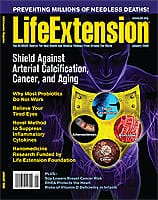 | January 20, 2009 | | | | An article published in the February, 2009 Journal of Nutrition reported the outcome of a clinical trial which found a lowering effect for green tea catechins on abdominal fat and triglycerides in overweight adults. Increased abdominal fat is a factor associated with metabolic syndrome, which increases the risk of diabetes and heart disease. Kevin C. Maki of Provident Clinical Research in Bloomington, Indiana, along with coauthors including Jeffrey B. Blumberg of Tufts University in Boston, randomized 132 overweight or obese adults to receive a beverage containing approximately 625 milligrams green tea catechins (including gallocatechin, epigallocatechin, catechin, epicatechin, EGCG, gallocatechin gallate, epicatechin gallate and catechin gallate) and 39 milligrams caffeine, or a beverage containing the same amount of caffeine without catechins daily for twelve weeks. Participants were requested to maintain the same amount of caloric intake and to engage in at least 180 minutes per week of exercise, including at least three supervised sessions each week. Body composition, serum lipids, and other factors were assessed at the beginning and end of the study. Both groups lost weight by the end of the study, yet participants who received catechins experienced a greater amount of weight loss than those who consumed the control beverage. When fat mass was considered, the percentage lost was greater in the catechin group, although the amount was not considered significant. However, total abdominal fat area, subcutaneous abdominal fat and serum triglycerides were significantly lower in subjects who received green tea catechins. Tea catechins’ most commonly studied mechanisms of action on body composition are that of improving thermogenesis and increased fat oxidation. “Our results are not inconsistent with the possibility that catechin consumption increases energy expenditure to a degree that could produce clinically important changes in body fat over time,” the authors write. “Larger and/or longer trials will be needed to test this hypothesis. | |  |  | | About age 30 to 35, most men (and some women) notice they are gaining weight around the middle. Their pants become tight and at some point no longer fit. The words “pot belly,” “beer belly,” or “spare tire” are sometimes used to describe the medical condition called “abdominal obesity.” This sort of fat accumulation greatly increases the risk of cardiovascular and other diseases. As it turns out, there is a scientific explanation for the tendency toward abdominal obesity among middle-aged men. As men age, their levels of free testosterone decline, and levels of estrogen and insulin increase. This is partly because aging men convert much of their testosterone into estradiol, a form of estrogen. Of the remaining testosterone, much is bound to sex hormone–binding globulin, a protein in the blood, and is not biologically active. Clinical studies have shown that testosterone replacement therapy can provide a variety of benefits. - In one study of 86 men aged 50 to 70, waist-to-hip ratio and blood pressure markedly decreased after 60 days of testosterone therapy (Li et al 2002).
- Another testosterone-replacement study in middle-aged obese men showed improved waist-to-hip ratio along with a decrease in plasma insulin and an increase in glucose disposal, suggesting improved insulin sensitivity (Marin et al 1992).
- In another trial, abdominally obese middle-aged men showed improved glucose control, decreased abdominal body fat, and improved sexual function after testosterone therapy (Boyanov et al 2003).
In women, the relationship between excess body fat, testosterone, estrogens, and progesterone is somewhat more complicated. | Life Extension magazine January, 2009 issue now online! 
- On the cover:
- Reports:
- Departments:
- Scientific abstracts:
| | |  | | Life Extension Update | | What's Hot | | Life Extension magazine | |

